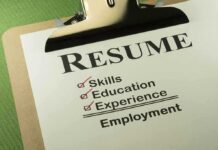
Silicon Valley startups are ditching shoes at the office door, turning corporate America’s most basic dress code requirement on its head in pursuit of creativity and collaboration.
Story Snapshot
- Over a dozen tech startups now mandate shoeless workplaces, inspired by cultural practices where shoes are removed indoors
- Companies like Cursor and Speak believe bare feet boost creativity and foster community among employees
- Critics worry the trend compromises professionalism and raises hygiene concerns in shared workspaces
- The movement reflects Silicon Valley’s ongoing experiment with unconventional workplace practices
The Barefoot Revolution Takes Hold
Ben Lang sparked a viral conversation when he revealed his employer Cursor requires all employees to remove their shoes upon entering the office. His post exposed a growing trend among Silicon Valley startups embracing shoeless workplaces as the latest innovation in office culture. Companies like Speak, led by co-founder Andrew Hsu, have adopted similar policies, believing bare feet create psychological comfort that translates into enhanced collaboration and creative thinking.
This workplace revolution draws inspiration from Asian cultural practices where removing shoes indoors demonstrates respect and maintains cleanliness. Startups are adapting these age-old customs, arguing that traditional corporate formality stifles the innovative thinking essential for competitive advantage. The policy represents more than comfort—it symbolizes a fundamental shift away from conventional business hierarchies toward more egalitarian work environments.
The Science Behind Shoeless Success
Anita Williams Woolley, a Carnegie Mellon University professor specializing in organizational behavior, acknowledges that increased comfort can indeed boost creativity and collaborative thinking. However, she cautions that extreme informality may blur essential professional boundaries that maintain workplace structure and respect. The challenge lies in balancing comfort with maintaining the professional standards that clients and partners expect from business interactions.
Companies implementing these policies report employees feel more relaxed and willing to engage in spontaneous brainstorming sessions. The physical act of removing shoes creates a mental transition from external pressures to internal focus, potentially enhancing problem-solving abilities. Yet this psychological benefit comes with trade-offs that not every organization finds worthwhile, particularly when hosting client meetings or maintaining traditional business relationships.
Professional Concerns Mount
Critics argue that shoeless offices sacrifice professionalism for gimmicky workplace trends that may alienate clients accustomed to traditional business environments. Hygiene concerns top the list of objections, with questions about foot odor, cleanliness standards, and health implications in shared spaces. These practical considerations become especially problematic during important meetings with investors, clients, or partners who expect conventional professional settings.
The trend also raises questions about workplace inclusivity, as some employees may feel uncomfortable exposing their feet due to medical conditions, cultural backgrounds, or personal preferences. Companies must navigate these sensitivities while maintaining the collaborative atmosphere they seek to create. Additionally, safety regulations in certain work environments may prohibit barefoot policies, limiting adoption to specific industries and office types.
Cultural Shift or Passing Fad
The shoeless office trend reflects Silicon Valley’s broader rejection of traditional corporate culture in favor of innovative approaches to employee engagement and productivity. Companies like Notion and Gusto pioneered similar informal policies years ago, suggesting this movement has deeper roots than mere novelty. However, the sustainability of such practices remains questionable as these startups mature and face pressure to conform to conventional business standards.
The success or failure of shoeless workplaces may ultimately depend on each company’s ability to balance innovation with practicality. While creative environments benefit from reduced formality, businesses must maintain professional credibility to attract top talent, secure funding, and build lasting client relationships. The true test will come when these experimental policies face the scrutiny of sustained business growth and evolving market demands.
Sources:
On Air with Ryan Seacrest – Some Offices Are Going Footwear Free
Fortune – The Hottest Workplace Policy at Startups Right Now: No Shoes
Star Tribune – Shoeless Office Trend at Startups
The Hustle – No Shoes at the Startup















